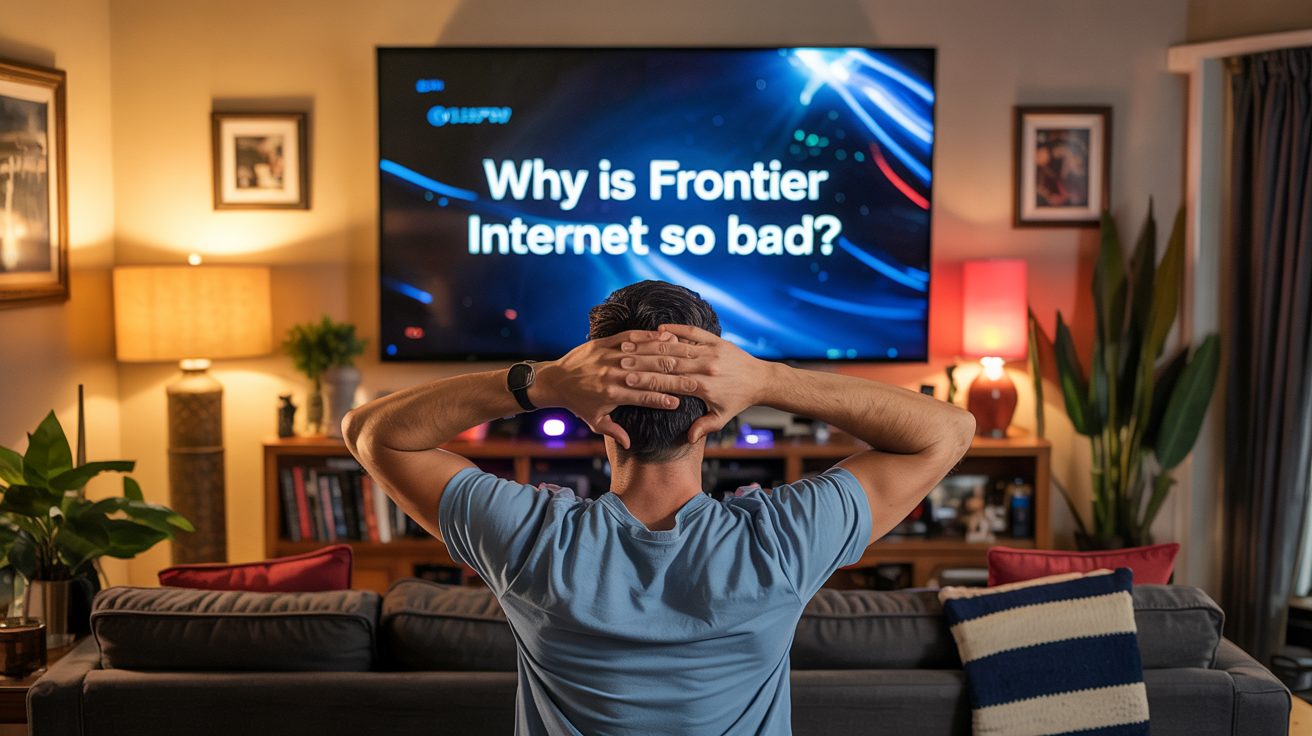Frontier Internet: The Top 5 Reasons for Customer Dissatisfaction

Frontier Communications, a major internet service provider in the United States, has long been a go-to option for customers in rural and suburban areas where options for high-speed internet are limited. However, despite its widespread availability, Frontier Internet has garnered a reputation for leaving many customers frustrated and dissatisfied. From unreliable connections to poor customer service, the grievances are numerous and well-documented. In this blog, we’ll explore the top five reasons why Frontier Internet customers are often left disappointed, shedding light on the challenges faced by subscribers and offering insight into what drives their dissatisfaction.
Unreliable Internet Speeds and Frequent Outages
One of the most common complaints about Frontier Internet is the inconsistency of its service. Customers frequently report that the speeds they experience fall far short of what was promised in their plans. For instance, a customer who signs up for a 100 Mbps plan might only receive a fraction of that speed during peak usage times, or even during regular hours. This discrepancy between advertised speeds and real-world performance is a significant source of frustration, especially for those who rely on stable internet for work, streaming, or gaming.
Beyond inconsistent speeds, outages are another persistent issue. Frontier customers often find themselves without internet access for hours or even days at a time, with little warning or explanation. These disruptions can be particularly disruptive in today’s digital age, where remote work and online connectivity are essential. Rural customers, who may have few alternative providers, are hit hardest by these outages, as they’re left with no viable backup options. The unpredictability of Frontier’s service leaves many feeling trapped and underserved, fueling dissatisfaction across its user base.
Poor Customer Service Experiences
When internet issues arise, customers naturally turn to support for help. Unfortunately, Frontier’s customer service is frequently cited as a major pain point. Long wait times, unhelpful representatives, and a lack of resolution are recurring themes in customer feedback. Many report spending hours on hold, only to be transferred multiple times or disconnected without a solution. Others describe interactions with representatives who seem untrained or unable to address even basic technical problems.
Adding insult to injury, Frontier’s communication about outages or service disruptions is often lacking. Customers are left in the dark about when service will be restored, forcing them to repeatedly contact support for updates. This lack of transparency and accountability erodes trust, making an already frustrating situation worse. For a company that serves millions of households, the inability to provide reliable and empathetic customer support is a glaring weakness that drives dissatisfaction to new heights.
Hidden Fees and Billing IssuesAnother major grievance among Frontier Internet customers is the company’s billing practices. While Frontier often advertises competitive pricing to attract new subscribers, many discover hidden fees and unexpected charges that inflate their monthly bills. Installation fees, equipment rental costs, and vague “service charges” can catch customers off guard, turning an affordable plan into an expensive commitment.
Billing errors are also disturbingly common. Customers report being overcharged, double-billed, or charged for services they never agreed to. Correcting these mistakes is no easy feat, as it often involves navigating the aforementioned poor customer service channels. For example, some customers have shared stories of being promised a refund or credit, only to see the issue persist on subsequent bills. This combination of opaque pricing and billing mishandling leaves subscribers feeling nickel-and-dimed, further souring their perception of Frontier.
Outdated Infrastructure and TechnologyFrontier’s reliance on aging infrastructure is a root cause of many customer complaints. In many of the areas it serves, Frontier operates on legacy DSL (Digital Subscriber Line) networks rather than modern fiber-optic technology. While DSL was revolutionary in its time, it struggles to meet the demands of today’s bandwidth-heavy applications like 4K streaming, video conferencing, and online gaming. As a result, customers experience slower speeds and less reliable connections compared to competitors who have invested in fiber-optic networks.
Even in regions where Frontier offers its newer FiOS (fiber-optic) service, the rollout has been inconsistent. Some neighborhoods enjoy blazing-fast speeds, while others just a few miles away are stuck with outdated DSL. This disparity creates a sense of inequity among customers, particularly when they’re paying similar rates for vastly different levels of service. Frontier’s slow pace in upgrading its infrastructure leaves many feeling like they’re stuck in the past, unable to access the high-speed internet they need in 2025.
Limited Plan Options and Lack of Flexibility
Finally, Frontier Internet customers often express frustration over the company’s rigid plan offerings and lack of customization. In a market where competitors like Comcast, Spectrum, and even smaller regional providers offer a range of plans tailored to different needs, s—such as budget-friendly low-speed options or ultra-fast gigabit tiers, rs—Frontier’s choices can feel limited. Customers report that they’re often forced to choose between plans that are either too slow for their needs or far more expensive than they can afford, with little middle ground.
This lack of flexibility extends to contract terms as well. Many Frontier customers are locked into long-term agreements with hefty early termination fees, leaving them stuck with subpar service they can’t easily escape. Others complain about promotional pricing that expires after a short period, causing bills to skyrocket without warning. In an era where consumers value choice and adaptability, Frontier’s one-size-fits-all approach alienates subscribers who feel their specific needs aren’t being met.
Why This Matters for Frontier Customers
The cumulative effect of these issues—unreliable service, poor support, billing woes, outdated tech, and limited options—paints a picture of a company struggling to keep pace with customer expectations. For those in areas with multiple internet providers, switching to a competitor is a tempting solution. But for the millions of rural Frontier customers with no alternatives, these problems are a daily reality they’re forced to endure. This lack of competition may explain why Frontier hasn’t faced more pressure to address these widespread concerns, but it doesn’t lessen the frustration felt by its user base.
What Can Frontier Do to Improve?
To turn the tide of customer dissatisfaction, Frontier would need to make significant changes. Investing in infrastructure upgrades, particularly expanding its fiber-optic network, could address speed and reliability complaints. Improving customer service through better training, faster response times, and proactive communication during outages would rebuild trust. Transparent pricing and flexible plans would also go a long way toward making customers feel valued rather than exploited. While these fixes wouldn’t happen overnight, they’d signal a commitment to putting subscribers first—a shift that’s sorely needed.
Final Thoughts
Frontier Internet has the potential to be a lifeline for underserved communities, bridging the digital divide where other providers won’t venture. Yet, its current track record is marred by issues that leave customers feeling neglected and unheard. The top five reasons for dissatisfaction—unreliable speeds, poor customer service, hidden fees, outdated technology, and inflexible plans—highlight systemic problems that Frontier must address to regain its customers’ trust. Until then, subscribers will likely continue voicing their frustrations, hoping for a day when their internet service lives up to its promises.
For now, if you’re a Frontier customer experiencing these woes, you’re not alone. And if you’re considering Frontier as your next provider, weigh these factors carefully because, for many, the reality of Frontier Internet falls short of the marketing hype.





